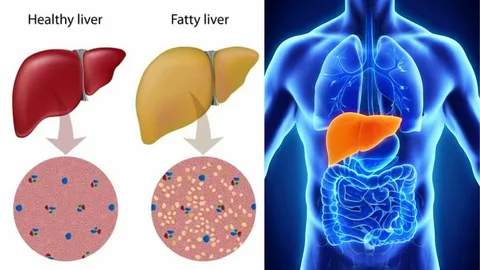Fatty Liver (NAFLD/AFLD)
Fatty liver disease, also known as hepatic steatosis, occurs when excess fat builds up in the liver. Non-Alcoholic Fatty Liver Disease (NAFLD), which is not linked to alcohol use, and Alcoholic Fatty Liver Disease (AFLD), which is caused by heavy drinking. NAFLD is often associated with obesity, diabetes, and poor lifestyle habits, while AFLD results from excessive alcohol intake over time. In its early stages, fatty liver usually shows no symptoms, but it can progress to inflammation, liver damage, or even cirrhosis if left untreated. Treatment mainly focuses on weight loss, healthy eating, regular exercise, and reducing alcohol consumption. Early diagnosis and lifestyle changes can significantly improve liver health and prevent further complications.

What is Fatty Liver Disease?
Fatty liver disease occurs when excess fat builds up in the liver. The liver normally contains some fat, but when fat makes up more than 5%–10% of the liver’s weight, it is considered a fatty liver.
1. Non-Alcoholic Fatty Liver Disease (NAFLD):
This is the most common form of fatty liver disease, not related to alcohol consumption. It is often seen in individuals who are overweight, diabetic, or have metabolic syndrome.
2. Alcoholic Fatty Liver Disease (AFLD):
Caused by excessive alcohol consumption, AFLD is an early stage of alcohol-related liver damage and can progress to more serious conditions like alcoholic hepatitis or cirrhosis if not managed.